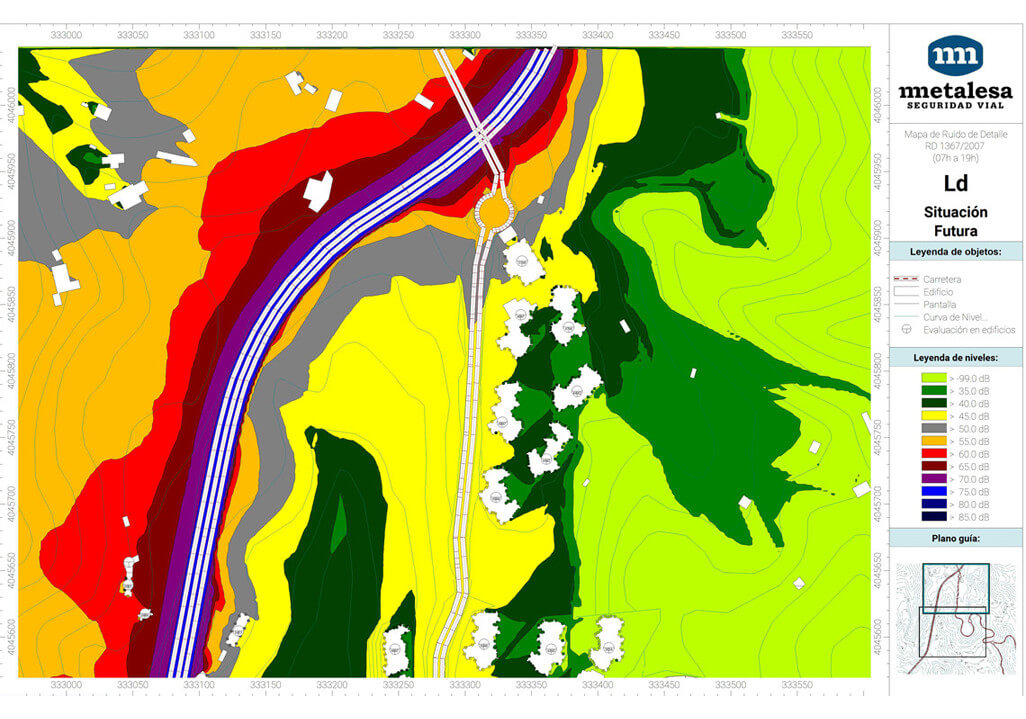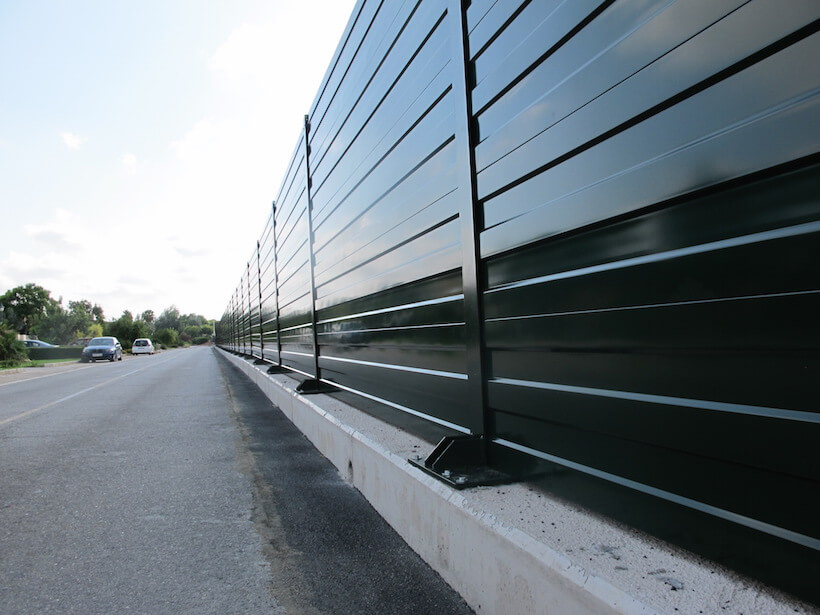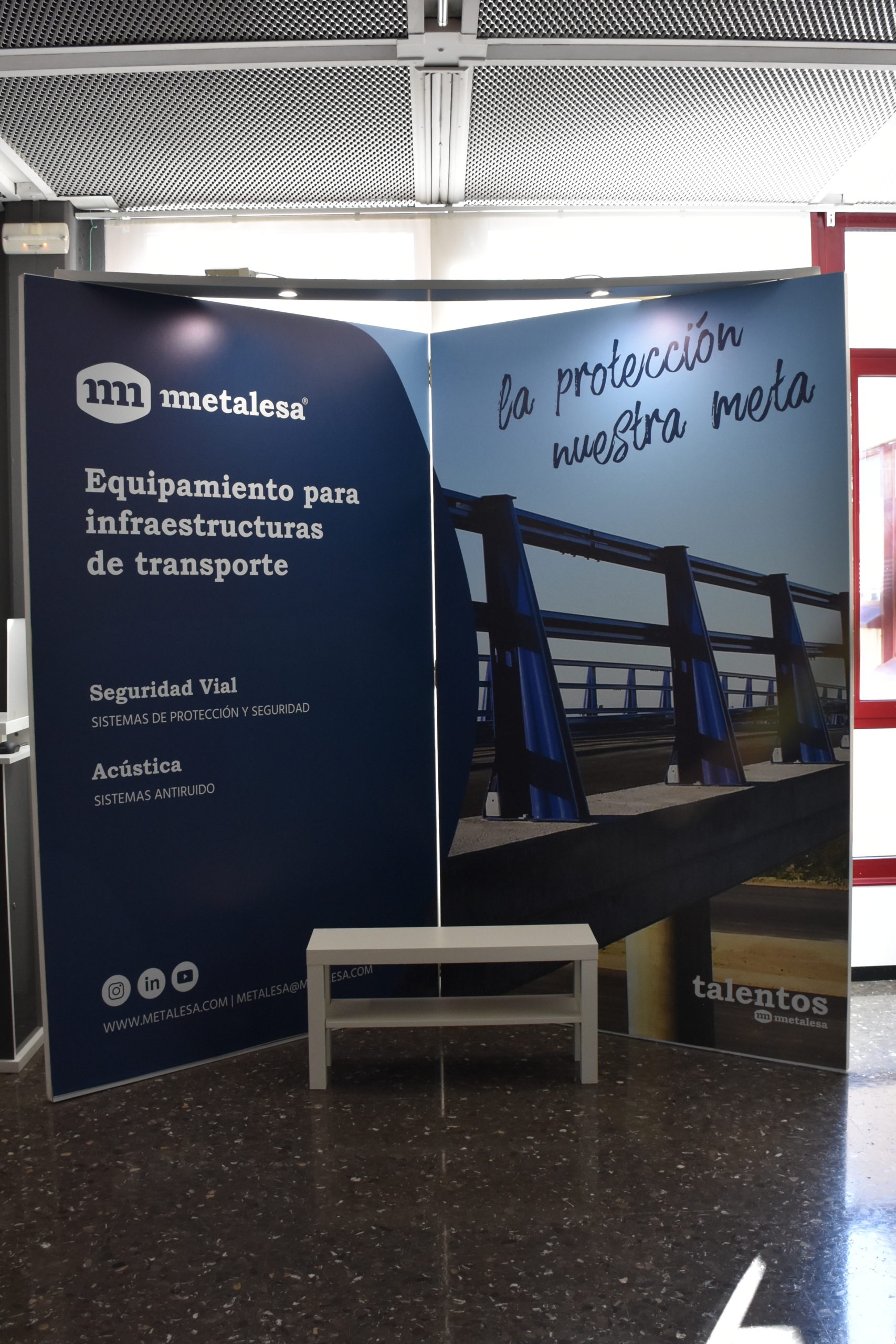What it is an acoustic study and why it is so necessary
Noise pollution is a current problem that we face every day. Its harmful effects impact both on the well-being of people and on the environment, so society as a whole is becoming more aware of it, and it is not surprising that the European legislative and regulatory framework is forcing public authorities to implement the necessary measures to guarantee our well-being. One of these measures is the performance of acoustic studies in projects through advanced noise mapping tools to measure the noise pollution of a specific area and adopt correct and optimized solutions. An environmental acoustic study is the tool that should be carried out on roads and urban infrastructures in order to determine if they comply with acoustic regulations.
Noise pollution and its effects on the population have been a generally ignored factor in urban planning in many cities, except for very obvious cases. In Spain many residential areas have problems of this type due to the settlement of urbanizations in areas close to transport infrastructure or industries. In response to this problem, it is common for residents to join neighbourhood associations that seek to exert pressure on the public administration to resolve their complaints.
Noise pollution in housing estates therefore affects people's health and the environment in general, fauna and flora. But not only that, it also has economic effects. The price of a home in a residential area with severe noise pollution can affect the price of the property up to 30%, since potential buyers associate noise with a lower quality of life, and therefore are willing to invest less . In case of the appearance of noise after the commissioning of the urbanization, it could be devalued and the investment of the residents very affected.
Our knowledge as manufacturers of acoustic solutions, together with the complementary capabilities of our collaborators, allows us to provide answers and solutions to all questions related to noise pollution.
From Metalesa, in order to offer our acoustic services, we subcontract these acoustic studies to the best companies in the sector.
Types of Acoustic Studies
To begin with, it is important to distinguish between two types of acoustic studies:
Acoustic building studies
They are intended for the technical improvement of the sound of a enclosed places as small businesses, leisure areas, discotheques, etc. This type of study is not part of our offer of services.
Environmental acoustic studies
These are the studies that we carry out in Metalesa, where the issue is to evaluate the sound propagated in an external environment, representing it through noise maps. Within this type of study we find two categories:
- Infrastructure or facility projects: Any new highway, railway or large industry project usually includes an acoustic study to measure the temporary or permanent noise impact that will provoke in the area, and determine if it will be necessary to adopt measures like acoustic screens.
- Urbanization projects: new urban developments must undergo an assessment of the noise level that they produce, as it can affect other buildings or homes in the area. In the event that the acoustic study determines that the legally established noise level is exceeded, the acoustic insulation of the facades should be carried out.
In addition, it also seems important to us to emphasize that there are two types of noise that can be analysed: on the one hand, airborne noise, transmitted by the air and coming from sound sources such as music equipment, smoke extractors or refrigeration equipment; this is the type of noise that we take care of at Metalesa. On the other hand, there is structural noise transmitted by vibrations of the structure.

What is the process to follow in an acoustic study?
- First, it is necessary to determine if the area to be studied is subject to noise pollution.
- The experts install their measuring equipment to evaluate whether the sound level is inside or outside what the norm allows. The time required to carry out the study is highly variable, from one or two hours to even leaving the equipment connected for a day, thus being able to analyse the variability of noise levels over time. This acoustic study depends on many factors, and all of them are taken into account when measuring the sound impact and determining a result of the study. For example, if the area is a closed tunnel, or if it is a road area with homes nearby, if these homes are high or low... These variables and many others will be surely taken into account by the expert for the viability of the acoustic study and the assessment of the results.
- Noise maps are obtained through acoustic studies, which normally allow one or more solutions. Acoustic screens is the most commonly adopted to attenuate it. Once installed, experts will return to check the impact of the anti-noise screens and verify if the acoustic problem has been solved.
It should be noted that we can not only carry out these studies in highway or urban areas, acoustic studies can also be carried out in public places of concurrence.
Two types of acoustic screens
In the event that the acoustic study concludes that the noise levels are above what is established, at METALESA we take care of installing the acoustic screens so that the sound waves bounce or are absorbed. We can distinguish two types:
Reflective screens
They are used in areas where there is nothing on one side of the barrier, so what they do is bounce the sound to that side.
Absorbent screens
These screens are used when there are homes, buildings or any infrastructure on both sides. In this case the noise does not bounce, but is attenuated and dissipated by absorption. The sound that enters the barrier is converted into movement, which vibrates the material of which the screen is composed, which is usually rock wool. This material allows the attenuation of noise.

Is acoustic studies mandatory?
The execution of an acoustic study is mandatory for all situations where noises levels are usually higher than 70dBA. These places can be bars, gymnasiums, cinemas, game rooms, carpentry workshops, car workshops, discotheques... The specifications of each location are included in the municipal ordinances.
As for the road areas, as we have previously commented, the most usual thing is that acoustic studies are carried out in newly created projects.
Without a doubt, conducting an acoustic study is a way of ensuring legal requirements, and the first step to protect people’s quality of life and their the environment. With the installation of our acoustic screens we try to provide a solution to the noise pollution that affects certain areas. Do not hesitate to contact us if you want to carry out an acoustic study, together with our trusted supplier companies we will take care of carrying out the entire process from start to finish.
How to protect an urbanization from noise
In general, we associate the term 'noise pollution' with the noise that is generated due to road traffic or industries. Sometimes residential areas are not as far from roads or industrial estates are they should be. It can also occur an excess of noise for various other reasons that can diminish the quality of life, and even the health of the people who live in them. Whatever the focus of the noise is, at Metalesa we have the solution. Depending on the origin of the problem, we can install acoustic screens on the roads or directly surrounding the residential areas. With this aim, it is necessary to carry out an acoustic study to determine the specific area to isolate and therefore where the noise screens should be built. The acoustic study provides crucial information to improve the solution and achieve the planned objectives with an optimised solution.
Beyond noise... an economic problem
Except for very obvious cases, noise pollution and its effects on the population have generally been an ignored factor while urban planning in many cities. In Spain many residential areas have such problems due to the settlement of urbanizations in areas close to transport infrastructure or industries. In response to this problem, and lacking the authorities initiative, it is common for residents to create neighbourhood associations that seek for exert advise to make pressure on the public administration and finally resolve their complaints.
Noise pollution in housing estates therefore affects people's health and the environment in general, fauna and flora. But not only that, it also has economic effects. The price of a home in a residential area with severe noise pollution can affect the price of the property up to 30%, since potential buyers associate noise with a lower quality of life, and therefore are willing to invest less. In case of the appearance of noise after the commissioning of the urbanization, it could be devalued and the investment of the residents very affected.

Urban Noise Screens
Urban noise screens are those that we place as an enclosure for urbanizations and as the main mechanism against noise. The reasons for implanting acoustic screens in housing estates can be diverse: proximity to roads with heavy traffic, proximity to bus or train stops or stations, poorly soundproofed industrial estates, nightlife area...
If the acoustic study shows the convenience of placing screens around the urbanization, our proposal is to place urban screens. These panels for private areas are mainly made up of two pieces:
- Acoustic panels: These panels make up the absorbent and reflective part thanks to a design that has been used for other environments for many years.
- Supporting structure: consisting of HEA/HEB-type uprights with hot-galvanized welded base plate and painted with polyester powder paint.
Regardless of their configuration, all the noise screens have been rigorously evaluated in certificate laboratories by the corresponding standards, guaranteeing maximum sound absorption values. Furthermore, at Metalesa we are concerned with both the functionality and the aesthetics of our products. At the same time that it ensures the elimination of the acoustic problem, it allows an excellent integration with the style of the urbanization, for which we adapt our solution to the client's aesthetic specifications. For example, urban screens can be made of metal, methacrylate, or wood. The metallic ones can be painted depending on the desired colour, by means of a thermo-lacquering process that guarantees a perfect finish of great durability. The supporting structure will be always metallic, so it can be thermolacquered no matter what material has been chosen for the panels.
Description of our noise acoustic screens
As we have already mentioned, if the acoustic study provides this conclusion, we will proceed to install anti-noise screens between the urbanization and the area that acts as the focus of noise pollution. At Metalesa we have various types of acoustic panels:
Metal steel or aluminium screen
We have a wide range of fully effective metal steel and aluminium screen panels to eliminate noise. They are installed and tested on roads across Europe. Its components are the following:
- Absorbing face oriented to the focus of noise: It is a multi-perforated metallic element, which allows the noise wave to penetrate inside the panel and dissipate in the absorbent material.
- Acoustic insulation: The interior of the panels is composed of rockwool of different thicknesses and densities depending on the acoustic parameters to be achieved. This material allows the dissipation of sound wave energy thanks to its fibrous and elastic nature.
- Reflective face: The rear reflective face is unperforated and leaves a gap in between with the rockwool, creating an acoustic chamber that reflects the sound waves back into the absorbent material.
- Supporting structure: It is made up of HEA/HEB type uprights, with hot-dip galvanized welded base plate and painted with polyester powder paint.
This type of acoustic screens allow effective noise isolation for the well-being of the residents of any urbanization, in addition to standing out for its excellent landscape integration and durability.

Green Panel
Green panel is a type of acoustic screen that integrates perfectly with the landscape and allows generating a greener environment thanks to the possibility of planting vegetation on them. In addition to rockwool, it also has an integrated green plastic mesh that facilitates the growth of vegetation on both sides.
Methacrylate Panel
Methacrylate Panel can be installed both on road and railway infrastructures and in housing estates, and can be both transparent and have drawings as required. Like the other panels, they are easily installed and very resistant, so they hardly require maintenance. They are composed of a polymethacrylate sheet and a supporting structure with a hot-welded base plate and painted with polyester powder paint.
Wood Panel
The wood acoustic panels are also filled with rock wool. They also have the advantage of being able to combine horizontal and vertical tables, achieving different aesthetic effects.
Summing up, the quality of the environment in which we live our lives is increasingly an objective that we must all empower to ensure the well-being of our people. Noise pollution is one of the factors that can most negatively affect this objective, which is why at Metalesa we take care of the process from very beginning to its end, from the acoustic study to the manufacture and installation of the acoustic screens, from the problem analysis to the solution in place.
If you need our acoustic services do not hesitate to contact us by calling 96 088 99 44, sending an email to metalesa@metalesa.com or directly through our contact form.


